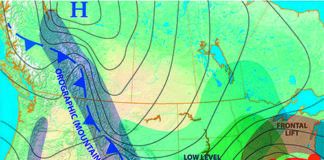To paraphrase Sir Walter Scott: “Breathes there a pilot with soul so dead who never looking skyward and watching the Thunderbirds hath said, ‘I wish I could fly with that kind of precision’?”
While few are selected for prestigious precision flying teams, we can all strive for precision in our flying. It’s simply a matter of discipline and shows that you’ve got the right stuff. Let’s explore a typical flight to find areas for excellence. It starts with taxi out.
Taxi with Precision
Keep the nose wheel right on the centerline. If there are embedded lights, offset just enough to avoid that annoying “thump, thump, thump.” Pick a straight line and don’t wander down the taxiway. The same is true on the takeoff roll.
When I was a B-727 first officer, a captain challenged me to keep the centerline lights between the two nose wheels. I worked at it and found I could. It became sort of a game. Later, I challenged my first officers to do the same. Mastering that, it was more difficult—but ultimately possible—to straddle the centerline lights on touchdown.
When you rotate, start the nose up so you lift off on speed. Then hold the target climb speed. Fly your heading precisely. Being five degrees or five knots off should make you correct, not relax.
With a little experience, you can usually anticipate what ATC will tell you, so plan your answer. Be frugal with your words. Respond to ATC’s requests with confidence, avoiding “uh,” “er,” or “um.”
Brief any passengers about what you are going to do and ask them to help you listen to ATC. During departure and arrival, maintain a “sterile cockpit” and brief your passengers.
At cruise, set power precisely for your configuration and hold your altitude. You have to be at some altitude; it might as well be the right one. This requires, of course, the correct altimeter setting.
Keep the CDI needle exactly in the center, regardless of whether you’re flying a VOR radial or a GPS course. (Prerequisite: understand VOR behavior and average out the electronic deviations.)
Autopilot
Even the worst coupled autopilot will usually outperform the best pilot, at least part of the time; the equipment will keep you where you’re supposed to be. But, letting it do so won’t help you get to be that “best pilot.” Do yourself a favor and fly every other leg without the autopilot. Use it as a resource, a supplement, not a requirement.
Critique yourself. It’s OK to talk to yourself. It’s even OK to answer. Ignore strange looks from the right seat. They’ll get over it.
Plan your descent to give ATC enough time to accommodate your plan. Decide if your descent will be by airspeed or vertical speed, then hold that precisely. When you level off, advance the power smoothly to gently level off on altitude and on speed.
During the approach, keep your nav centered. Hold the planned airspeed and/or vertical speed. Correct promptly but smoothly. Identify changing winds and other conditions. Cross the threshold at the threshold crossing altitude, then touchdown, on speed, on centerline, in the touchdown zone.
Maintain centerline throughout the landing roll, on the turn off and during taxi, all the way to the parking spot. If the parking spot has a “T” painted on the ramp, try to put the aircraft exactly on that “T” so that the tie-down spots on the ramp align with the tie-down rings on your aircraft.
Aw, So What?
Much of flying safely is about discipline. Do you also have the discipline to fly with precision? By now, some of you are wondering if it really matters as long as you’re safe and within limits. Truth is, it doesn’t matter to anybody but you, your self-discipline and professionalism. Oh, and your passengers will notice, too.
None of this is difficult. It just requires the discipline to practice and strive for precision. If you do, your flying will improve and you may find yourself walking a little taller, confident that you have flown your aircraft the way the designer expected you to. And, if the stuff ever hits the fan, you’ll be a better pilot to handle it.
Besides all of that, it’s fun.
After decades flying for a major U.S. airline, George Shanks retired to his farm outside Dallas. His one regret is that his grass strip doesn’t have a centerline to straddle.




